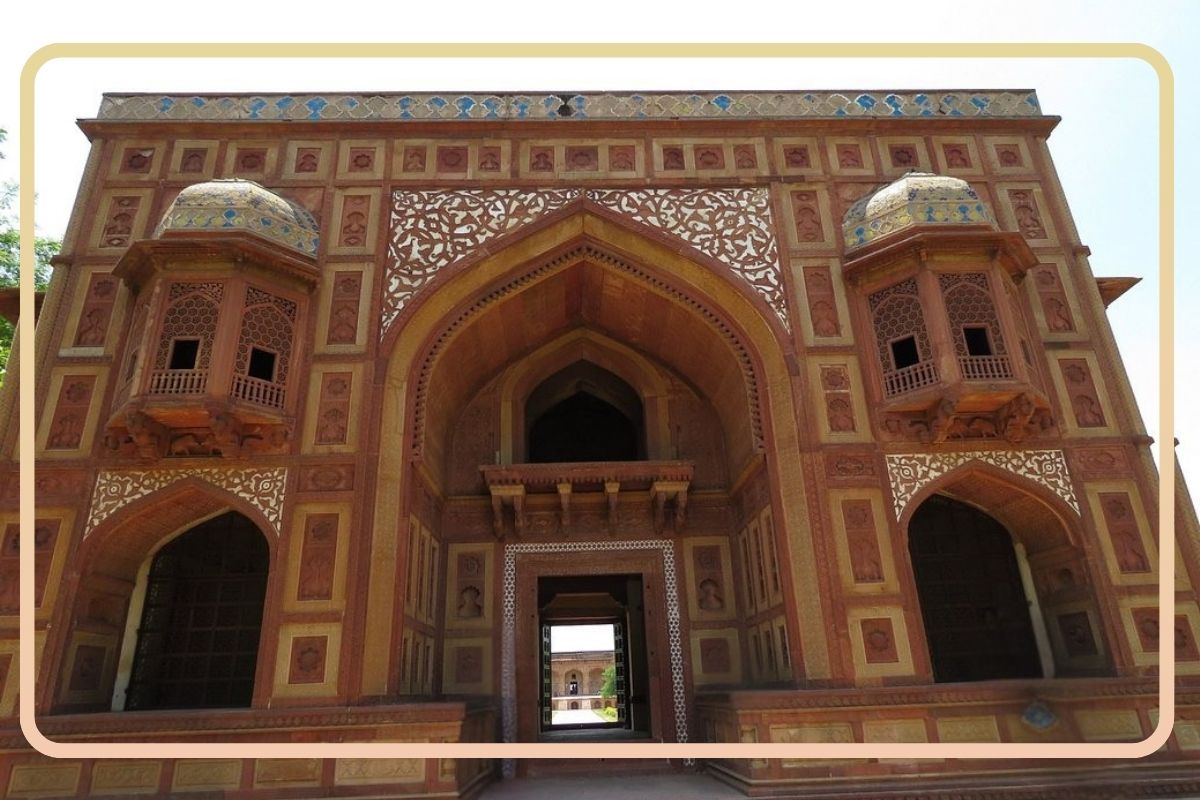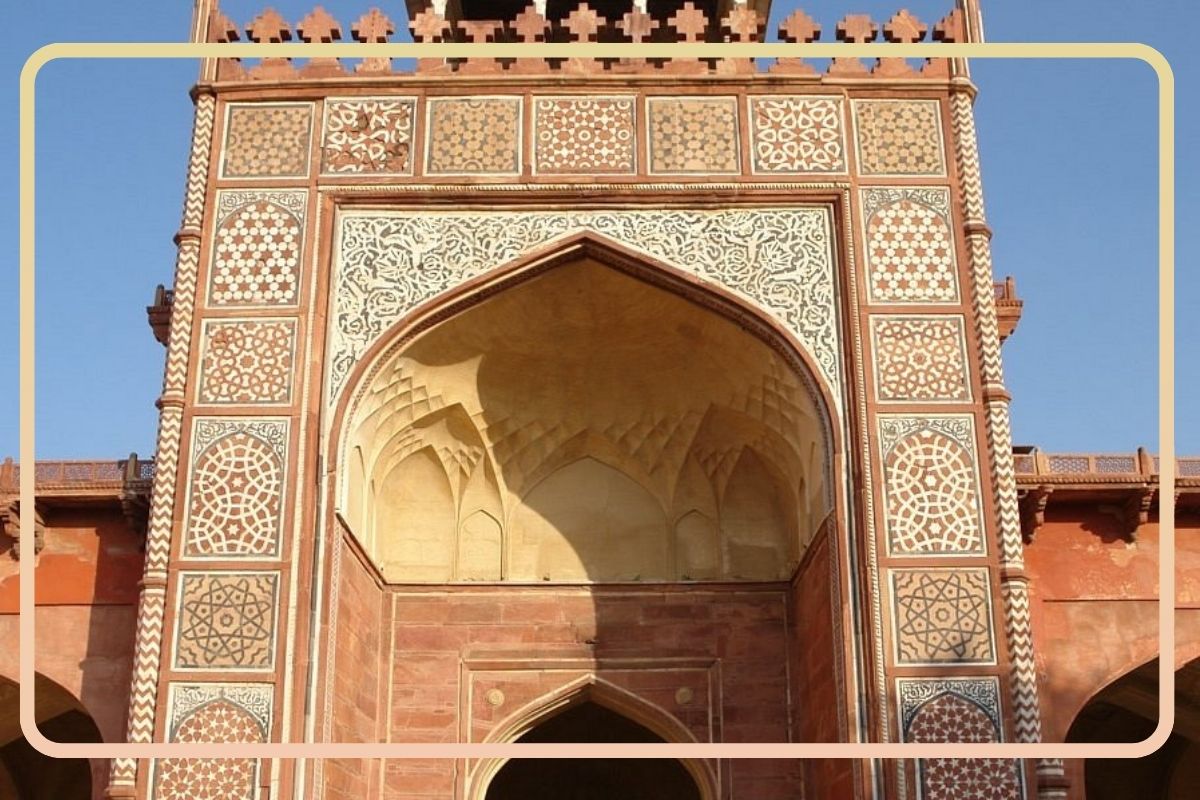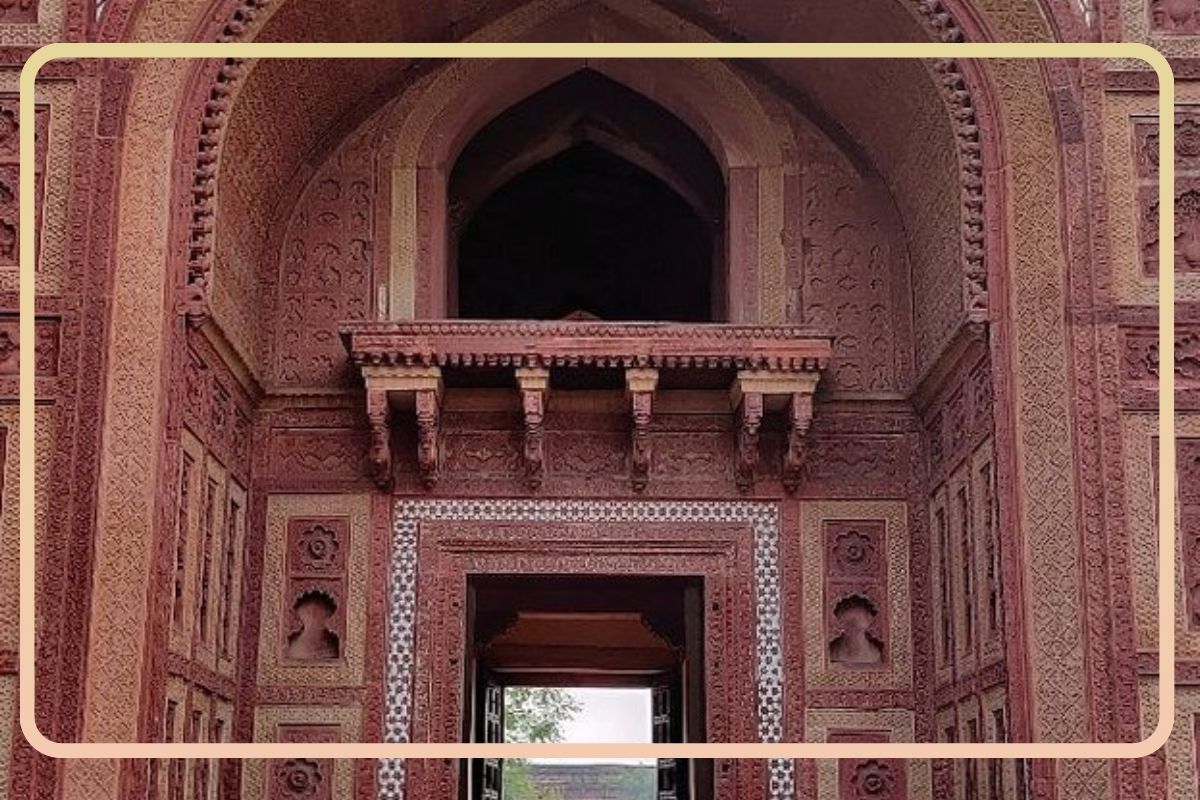What secrets did Mughal empresses whisper within walls that once glistened like diamonds under the Indian sun? Kanch Mahal, also known as the Glass Palace, holds answers that historians are still uncovering. Built somewhere between 1605 and 1619, this square structure was far more than just another royal building. It was a private world, a retreat where the women of the Mughal court escaped the rigid formalities of imperial life. The palace served as both a ladies’ resort and a royal hunting lodge, nestled in lush gardens with water channels that played gentle melodies throughout the complex. When you stand before its weathered walls today, you are looking at more than ancient architecture.
You are seeing the remnants of a dream where beauty and privacy merged into something extraordinary. The glazed tiles that once covered these walls reflected light in ways that made the entire structure shimmer, earning it the name that translates simply as Glass Palace. The floral motifs carved into red sandstone speak of artisans who understood that every curve and line mattered.

Located near Akbar’s tomb, Kanch Mahal weaves together different chapters of Mughal history into a single, continuous narrative. The palace gardens, though faded now, once burst with colours and fragrances that matched the splendour inside. Walking through this place today feels like stepping into a half-remembered dream, where the past refuses to stay silent and the stones themselves seem to breathe with memory.
The Architect’s Palette: A Mughal Masterpiece
The genius of Kanch Mahal lies in its ability to solve problems while creating beauty. Picture a square building with a central hall topped by a vaulted roof. Four corner rooms, each designed with ventilating openings, allowed air to flow freely through the structure. This was no accident. Agra’s summers are brutal, and Mughal architects knew exactly how to combat the heat without the aid of modern technology. The walls rose from brick masonry, then dressed themselves in finely carved red sandstone, transforming functional surfaces into works of art. Glazed tiles, though mostly lost to time now, once covered portions of the building in brilliant colours. The decorative elements tell their own story.

Sunk niches, lotus flowers frozen in stone, arabesques that twist and turn with mathematical precision, and floral creepers that seem to grow before your eyes. These were not mere decorations. They represented a philosophy where art and daily life could not be separated. The symmetrical layout extended beyond the building itself into gardens and water features, creating an environment of complete tranquillity.
Balconies and jharokhas served a practical purpose, channelling breezes through the interior spaces. This marriage of beauty and function defined Mughal architecture at its finest. The palace was not meant to impress visitors with size or intimidation. Instead, it created an intimate space where people could find peace and reflection. Even in ruins, these principles remain visible, teaching lessons about design that modern architects still study and admire.
From Past to Present: A Tale of Decline and Preservation
Time shows no mercy, not even to palaces. Kanch Mahal’s glittering facade dimmed as centuries passed, as empires fell, and as newer priorities pushed old monuments aside. Neglect took hold, and the structure that once housed royalty became a shell of its former glory. Yet something remarkable happened. Instead of disappearing entirely, Kanch Mahal found new life as a protected monument under the Archaeological Survey of India. Restoration efforts are now focused on recovering as much of the delicate glasswork and structural elements as possible. These efforts face enormous challenges. How do you restore something when the original techniques have been lost? How do you balance preservation with the reality that some damage cannot be undone?

Despite these questions, the work continues. Today, Kanch Mahal attracts visitors who come seeking different things. Tourists photograph the ruins and imagine the splendour that once was. History enthusiasts study the architectural details, piecing together how Mughal domestic life actually functioned. Architects examine the building’s solutions to climate and privacy, finding inspiration for contemporary designs.
The palace has become more than a monument. It serves as a connection point between modern India and its Mughal past. When visitors walk through the remaining gardens, they are not just seeing old stones. They are touching a vision of what India once was, experiencing firsthand the artistic brilliance that defined an era. The ruins speak of both fragility and endurance, showing how even damaged beauty can teach and inspire generations that come centuries later.
Why Kanch Mahal Matters Today
Modern India moves fast, building glass towers and technology parks that would astound the Mughal emperors. Yet Kanch Mahal offers something these new structures cannot. It provides a direct link to artistic and architectural principles that remain relevant regardless of technological advancement. The Mughal obsession with creating harmony between buildings and nature has lessons for urban planners struggling with concrete jungles.
Their understanding of climate control through design offers alternatives to energy-intensive air conditioning. Their commitment to beauty as an essential element, not an optional luxury, challenges the purely functional approach of much contemporary construction. Beyond architecture, Kanch Mahal represents something deeper about Indian identity. The palace stands as a testament to India’s rich cultural heritage, which encompasses periods of extraordinary artistic achievement.

This matters in a world where cultural narratives often get simplified or forgotten. The structure reminds us that great civilisations leave behind more than military victories or political treaties. They leave beauty, innovation, and ideas that outlast empires. For younger generations, places like Kanch Mahal offer tangible connections to history. Reading about Mughal architecture in textbooks provides information.
Standing inside Kanch Mahal, touching the walls carved by artisans who died four centuries ago, creates a deeper understanding. The preservation of such monuments ensures that these connections remain possible. They keep alive not just buildings, but the values, skills, and visions that created them. In this sense, Kanch Mahal is significant because it demonstrates that respecting the past enriches the present.
Kanch Mahal: A Glass Palace That Glows Forever
Kanch Mahal refuses to fade quietly into history. Despite weathered walls and missing tiles, despite centuries of neglect and the slow work of restoration, the palace continues to capture imaginations. It stands as proof that human creativity can transcend time, that beauty carefully crafted endures even when empires crumble. The Mughal women who once found refuge here are long gone, but their palace remains, telling stories to anyone willing to listen.

Today, as restoration work continues and visitors continue to arrive, Kanch Mahal has found a new purpose. It serves as a bridge between past and present, between the dreams of emperors and the curiosity of modern travellers. The palace reminds us that history lives not just in books but in stones, in gardens, in the way light falls through ancient openings. It teaches that preserving beauty matters, that connecting with our past enriches our future. Kanch Mahal glows still, not with glazed tiles reflecting sunlight, but with the enduring light of human achievement. Its legacy beckons us to look back, to learn, and to carry forward the best of what came before into whatever we build next.
Also Read: Tomb of Sher Shah Suri: An Emperor’s Dream Palace Floating On Water
You can connect with DNN24 on Facebook, Twitter, and Instagram and subscribe to our YouTube channel.

